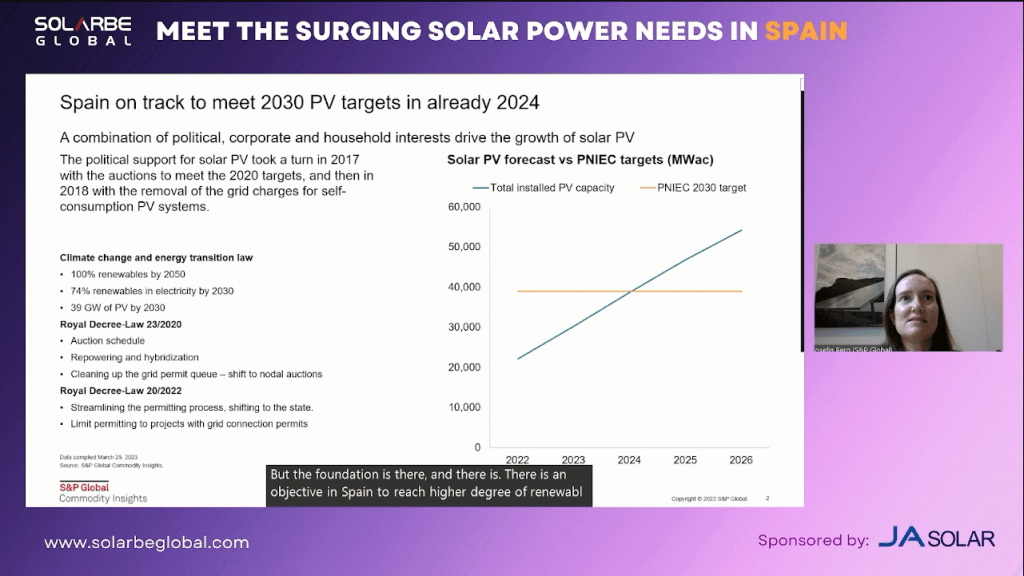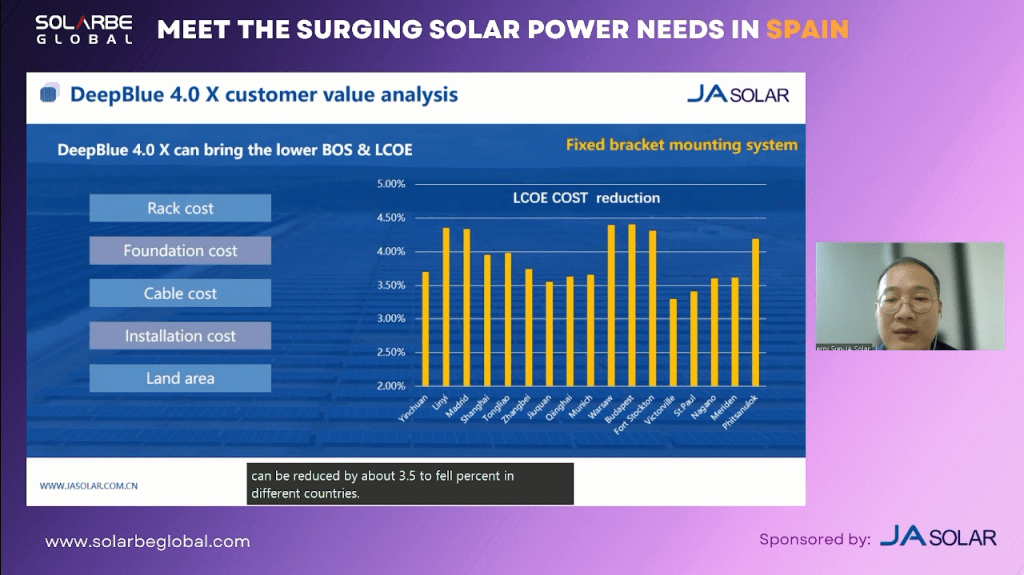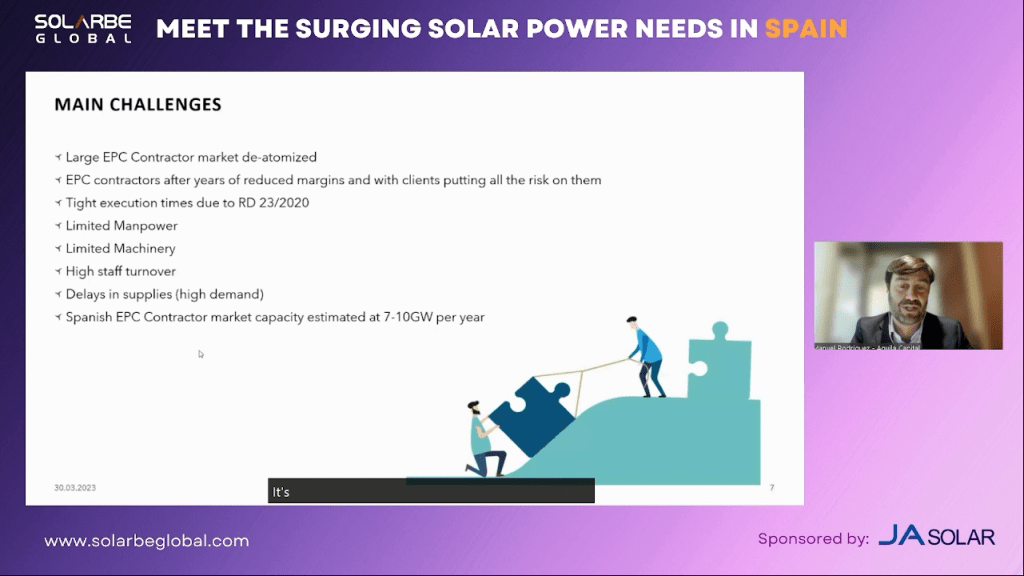During a webinar hosted by Solarbe Global on March 30, experts from S&P Global Commodity Insights, JA Solar and Aquila Capital discussed the opportunities and challenges in the Spanish solar market, highlighting the supply chain constraints brought by bulk permitting in the country.
Josefin Berg, Research and Analysis Manager in the Clean Energy Technology group at S&P Global Commodity Insights, gave a comprehensive overview on the rapid development of the PV market in Spain. According to her analysis, Spain is now the largest PV market in Europe and the fifth largest in the world. The country’s PV market has witnessed a rapid evolution, with a significant increase in the installation of PV systems over the past few years. Spain is on track to meet its 39 GW target in 2024, which is six years ahead of schedule.

She emphasized that distributed generation is gaining a larger share in the market, driven in part by high electricity prices for consumers. She predicted that both utility-scale and distributed generation installations will continue to grow over the next few years. However, in comparison to the whole of the European market, Spain is still relatively a utility-scale market.
Watch the replay of the webinar
Jerry Sun, Senior Manager of Product Promotion at JA Solar, presented the technical features and values of the JA Solar DeepBlue series modules. The DeepBlue 4.0 X module, which was released for the global market in May 2022, is a high-performance module that boasts various advanced technologies. The module features BYCIUM+ cell, lower degradation, better temperature, bifacial generation and low irradiance performance, and excellent reliability.

The module’s efficiency can reach about 22.4%, making it a reliable and high-performance module that can help customers lower their LCOE.
Jerry also discussed the current status and trends of cell and module technology, emphasizing the importance of stable, reliable, and high efficiency modules in reducing LCOE.
Manuel Rodriguez, the Procurement Director at Aquila Capital, gave a presentation on the challenges facing the solar industry in Spain. He focused on the supply chain constraints and bulk permitting, which have led to over-demand from contractors, suppliers, and other key players in the market.
He estimated that there are approximately 30-50 GW of projects that have received environmental permits and he expected a boom in construction at the end of this year and the beginning of the next.

Josefin also mentioned that there is a minimum of 30 GW projects that have received Declaración de Impacto Ambiental (DIA). “Besides that, the country has at least another 40 GW of projects in planning and we will see how this develops now because there’s still a lot of uncertainty,” said Josefin.
To address the challenges brought by bulk permitting, Manuel emphasized the importance of establishing long-term relationships with suppliers and involving them from the beginning with full transparency of information. He also stressed the need to prioritize quality and sustainability in the supply chain, especially during a time of supply chain tensions.
However, despite the challenges and uncertainties, the speakers are optimistic about the future prospects of the Spanish solar market.
“There are a lot of challenges, there are going to be supply bottlenecks, and the amount of activity is so intense. But that’s not going to stop the growth of PV in Spain. We know 50 GW will not be built in the next 2 years, but Spain will be one of the biggest markets in Europe over the years to come,” said Josefin. “The activity and all these bottlenecks are really just showing the high activity of the market and the high demand and high interest for the Spanish market.”


